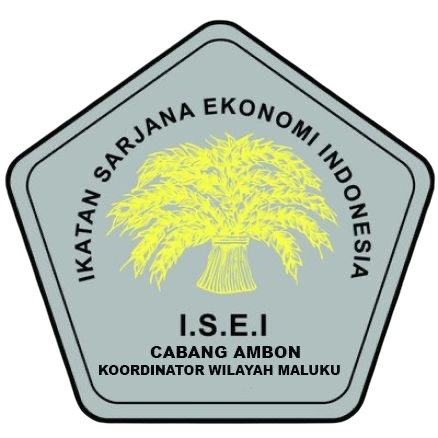THE EFFECT OF INFLATION AND ECONOMIC STRUCTURE CHANGES ON FARMER EXCHANGE VALUE (NTP) IN EASTERN INDONESIA
Abstract
Recently, the relationship between farmer exchange rates and the variables that influence them still leaves debate and various empirical findings. In general, this study aims to 1) analyze inflation's effect on farmers' exchange rates in Eastern Indonesia. 2) Analyze the effect of changes in the agricultural sector's economic structure on the exchange rate of farmers in Eastern Indonesia. 3) Analyze the effect of farmer exchange rates in the previous year on farmer exchange rates in Eastern Indonesia. 4) Analyze the simultaneous effect of the inflation rate, changes in the economic structure, and the previous farmer exchange rate on farmers' exchange rate in Eastern Indonesia.
The analysis method used is descriptive qualitative and quantitative analysis. The quantitative analysis tool used is the Panel Data regression model. The data used is panel data from 12 provinces in Eastern Indonesia for the period 2010-2018. There are several approaches to estimating the panel data regression model, so it is necessary to carry out statistical tests to get the best and efficient regression parameters (BLUE, Best Linear Unbiased Regression). In this study, the panel data estimation technique selected based on the Chow test, LM test, and Hausman test is the Random Effect Model.
The results showed that changes in the agricultural sector structure and the lag of the farmer exchange rate were found to have a positive and significant effect on the exchange rate of farmers, while the inflation rate had a negative and significant effect on the exchange rate of farmers. In the end, local governments have a significant role in improving the agricultural sector's development, leading to increased welfare of farmers. Therefore, the existence of political will that sided with farmers is an essential factor in changing the agricultural sector's welfare.











